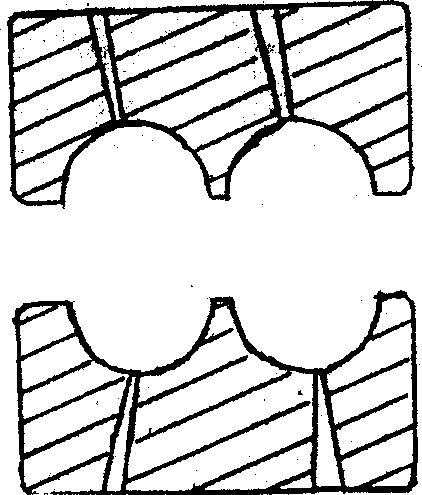Swelled polymer particles filter process for preparing artificial eye holder
A technology of swelling polymerization and prosthetic eye table, applied in the field of biomedicine, can solve the problems of rejection, the fat layer is easily absorbed, the plastic is easy to slip out, etc., and achieves the effect of low material density
- Summary
- Abstract
- Description
- Claims
- Application Information
AI Technical Summary
Problems solved by technology
Method used
Image
Examples
Embodiment 1
[0023] 1. Sieve NaCl with a particle size in the range of 450 microns to 520 microns through a standard sieve.
[0024] 2. Stir and mix polyether polyurethane saturated solution (solvent is tetrahydrofuran) with NaCl, the mass ratio of solution: NaCl is 1:2, pour it into a mold, compact it tightly, and obtain a spherical semi-finished product through natural volatilization and vacuum drying.
[0025] 3. Take 10 ml of 2-ethoxyethyl methacrylate (EEMA), 0.1 g of divinyl glycol, and 40 mg of AIBN in a beaker to prepare a solution.
[0026] 4. Put the trimmed spherical semi-finished product in a beaker, add the solution prepared in 3, until the spherical semi-finished product is submerged, pass nitrogen protection, seal, and swell for 3 hours.
[0027] 5. Take out the spherical semi-finished product, put it into a beaker, pass through nitrogen protection, seal it, and polymerize it at 70°C for 24 hours.
[0028] 6. Take out the reacted sphere and put it in deionized water. At 25°...
Embodiment 2
[0030] 1. Sieve white granulated sugar with a particle size within the range of 450 microns to 520 microns through a standard sieve
[0031] 2. Stir and mix polyester polyurethane saturated solution (solvent is tetrahydrofuran) and white granulated sugar, the mass ratio of solution:white granulated sugar is 1:2.5, pour into the mold, compact compactly, obtain spherical semi-finished product through natural volatilization and vacuum drying.
[0032] 3. Take 10 ml of 2-hydroxyethyl methacrylate (HEMA), 0.1 g of N, N-methylenebisacrylamide, and 40 mg of ABVN in a beaker to prepare a solution.
[0033] 4. Put the trimmed spherical semi-finished product in a beaker, add the solution prepared in 3, until the spherical semi-finished product is submerged, pass nitrogen protection, seal, and swell for 10 hours.
[0034] 5. Take out the spherical semi-finished product, put it into a beaker, pass it into nitrogen protection, seal it, and irradiate it with ultraviolet light for 5 hours. ...
Embodiment 3
[0037] 1. Sieve NH with a particle size in the range of 300 microns to 400 microns through a standard sieve 4 HCO 3 .
[0038] 2. Mix PHB saturated solution (solvent is chloroform) with NH 4 HCO 3 Stir to mix, solution: NH 4 HCO 3 The mass ratio is 1:3, poured into a mold, compacted tightly, and obtained a spherical semi-finished product through natural volatilization and vacuum drying.
[0039] 3. Take 7 ml of 2-hydroxyethyl methacrylate (HEMA), 3 ml of methacrylic acid (MA), 0.1 g of N, N-methylenebisacrylamide, and 50 mg of ammonium persulfate in a beaker to prepare a solution .
[0040] 4. Put the trimmed spherical semi-finished product in a beaker, add the solution prepared in 3, until the spherical semi-finished product is submerged, pass nitrogen protection, seal, and swell for 36 hours.
[0041] 5. Take out the spherical semi-finished product, put it into a beaker, pass through nitrogen protection, seal it, and polymerize it at 60°C for 36 hours.
[0042] 6. Ta...
PUM
| Property | Measurement | Unit |
|---|---|---|
| particle diameter | aaaaa | aaaaa |
| diameter | aaaaa | aaaaa |
| particle diameter | aaaaa | aaaaa |
Abstract
Description
Claims
Application Information
 Login to View More
Login to View More - R&D
- Intellectual Property
- Life Sciences
- Materials
- Tech Scout
- Unparalleled Data Quality
- Higher Quality Content
- 60% Fewer Hallucinations
Browse by: Latest US Patents, China's latest patents, Technical Efficacy Thesaurus, Application Domain, Technology Topic, Popular Technical Reports.
© 2025 PatSnap. All rights reserved.Legal|Privacy policy|Modern Slavery Act Transparency Statement|Sitemap|About US| Contact US: help@patsnap.com



